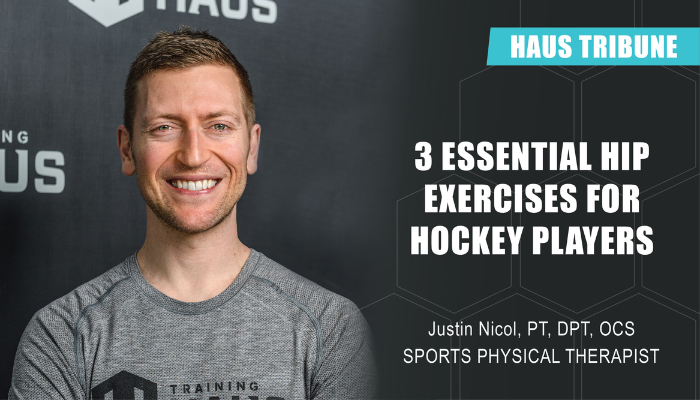
3 Essential Hip Exercises for Hockey Players
It’s the most wonderful time of the year, tourney time in the State of Hockey! Shifting from off-season training to in-season competition increases the intensity and volume of skating. Because the muscles surrounding the hips are the motor for skating, this also increases the risk for overuse injuries.
Athletes often push themselves through grueling game and practice schedules for months on end. This leads to strains in the adductor/groin, hip flexor, and quad.
To be a powerful skater, athletes need explosive hip abductors/extenders for their stride and strong hip flexors for a powerful brake.
During the season, players might experience discomfort in one of the three areas above. Most athletes are familiar with the RICE principle (Rest, Ice, Compress, Elevate) when it comes to acute injuries. However, a different approach is needed for acute soft tissue injuries.
Here are three essential hips exercises to stay healthy in-season:
1. Side Plank + Hip Abduction
Glute medius is the primary target of this exercise which is responsible for generating your power through a stride. Having a solid foundation through the glutes prepares you for the repetitive nature of skating and keeps your hips healthy!
Begin with your top leg elevated and your body weight supported by your knee and elbow. Keep your elbow directly under your shoulder. Hold the position for 40 seconds and then switch sides. Once you’re able to complete three sets at 40 seconds each, extend your lower leg to increase the challenge! Your hips should be square to the floor, so try not to rotate your trunk.
GOAL: 3 sets x 40 seconds
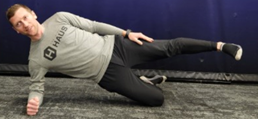
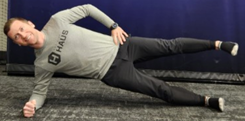
2. Single Leg Prone Plank
Targeting the rectus femoris, iliopsoas, and obliques, a plank is traditionally thought of as a core exercise. While it most definitely is, it also builds resiliency and strength in the hip flexors and quad muscles with your hip in a neutral or extended position relative to a hockey position.
Begin in a normal plank position supported on elbows. Your elbows should be directly under your shoulders. Then, lift one leg and hold. Maintain a relatively “neutral” or flat trunk, and keep your hips down. The second, more advanced position begins with elbows extended with your hands directly under your shoulders. Bend your knee to 90 degrees. Maintain a “neutral” or flat trunk, extend one leg behind you, and hold.
GOAL: 3 sets x 40 seconds
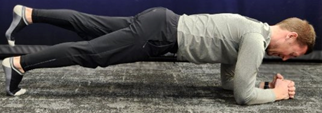
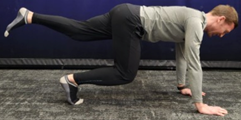
3. Adductor Plank
If you talk to any hockey player, they’ve most likely experienced a groin pull at some point in their career. This variation of the plank targets the adductor muscles used as the “brake” during a stride, acting to slow the leg and initiate the recovery phase while skating. You may have to begin from your knee and progressively move the box towards your foot, as this exercise is typically quite challenging.
Begin with your top leg bent at the knee and holding your body weight from a height of 12-18 inches. Pick up the bottom leg as your adductors hold you in place. To increase the challenge, extend your knee, and hold your body weight from your foot. Make sure your elbow stays directly under your shoulder.
GOAL: 3 sets x 40 seconds
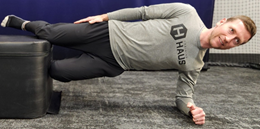
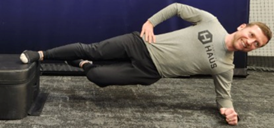
Final Thoughts
Finding time to take care of your body during the season is crucial for injury prevention and recovery. These three simple movements can be completed anywhere and with minimal equipment during your season. If you have pain or a nagging injury that won’t improve, schedule a physical therapy evaluation. Fill out this quick form, and a Training HAUS representative will be in touch to help you schedule an appointment.
References
- Brumitt, J (2015) The Bunkie Test: Descriptive Data for Novel Test of Core Muscular Endurance. Rehabilitation Research and Practice
- Buckeridge, et al (2022) An On-Ice Measurement Approach to Analyse the Biomechanics of Ice Hockey Skating.
- Upjohn T, Turcotte R, Pearsall DJ, Loh J (2008) Three-dimensional kinematics of the lower limbs during forward ice hockey skating. Sports Biomech 7: 206–221.
- Tyler, et al (2010) Groin Injuries in Sports Medicine. Sports Health
